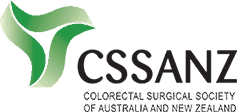Introduction
Diverticular disease is a condition that affects the lining of the bowel. The word 'diverticulum' is derived from the Latin word for 'pouch' and this describes what diverticula are – small pouch-like indentations in the bowel wall. Diverticular disease is in fact relatively common and becomes more common with age, in most cases without any symptoms. It is estimated that one in three people over 45 years old and one in two people over 70 have diverticula. There is no need to treat diverticular disease unless it does causes symptoms. Where diverticula are present, but there are no symptoms, this is referred to as diverticulosis. Where symptoms are present such as inflammation or infection of diverticula, this is referred to as diverticulitis.
Symptoms
Diverticulitis - the type of diverticular disease that causes noticeable symptoms, may cause one or more of the following…
- Appetite loss.
- Diarrhoea.
- Nausea.
- Night sweats.
- Pain and/or cramping in the abdomen, often to the lower left side.
- Shaking / chills / fever.
- Tiredness / fatigue.
If you have any of these symptoms, it is always advisable to visit your doctor, as diverticulitis, if not treated, can cause other complications such as abscesses or perforation of the bowel wall, and the symptoms may be linked to other bowel conditions, which may be serious.
Causes
Medical science does not fully understand how or why diverticula form, however a widely accepted theory is that it is caused by food intake low in fibre which makes it harder to empty the bowels, with the resulting stresses and strains possibly causing the development of the diverticula. The very low incidence of diverticular disease in people who eat a predominantly plant-based diet, such as vegetarians and the general populations in Asia and Africa would seem to back up this theory. Another theory is that the elasticity of the bowel wall changes due to the type of connective tissue within the bowel wall, resulting in weakness and therefore formation of diverticula.
Tests & Diagnosis
It can be hard to diagnose diverticulitis, as it shares many of the same symptoms as other bowel conditions. The most accurate test for the condition is a computed tomography (CT) scan during times of inflammation. A colonoscopy may be performed at some stage to ensure there is no other condition within the bowel.
Treatment
Diverticular disease does not require treatment other than a high fiber diet, unless symptoms develop. In this case, the first course of action is generally to make a change to the diet – the most common approaches are either a liquid-based diet, or a low fibre diet followed by a high fibre diet when the symptoms have settled. A course of antibiotics may be needed if symptoms are severe. If symptoms are not alleviated and / or fevers continue, this may indicate a complication from diverticulitis, such as a rupture or abscess. In either of these cases urgent medical attention is necessary.





